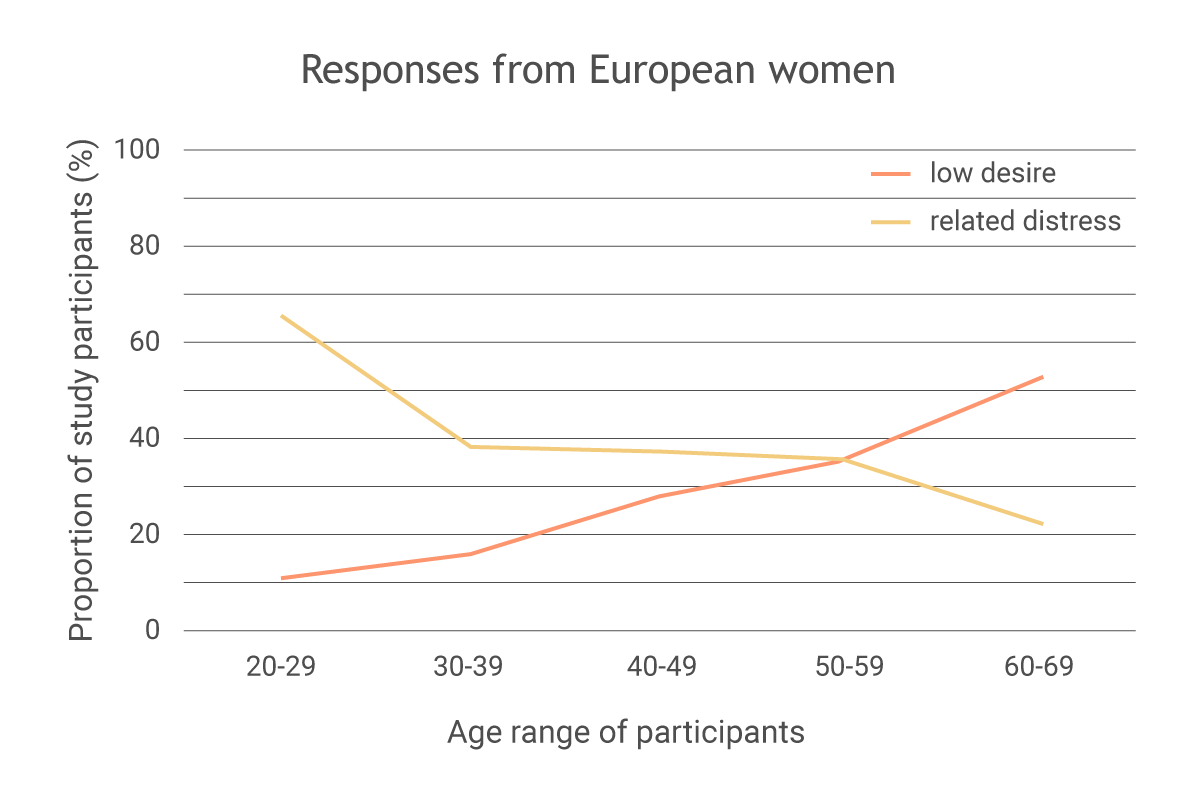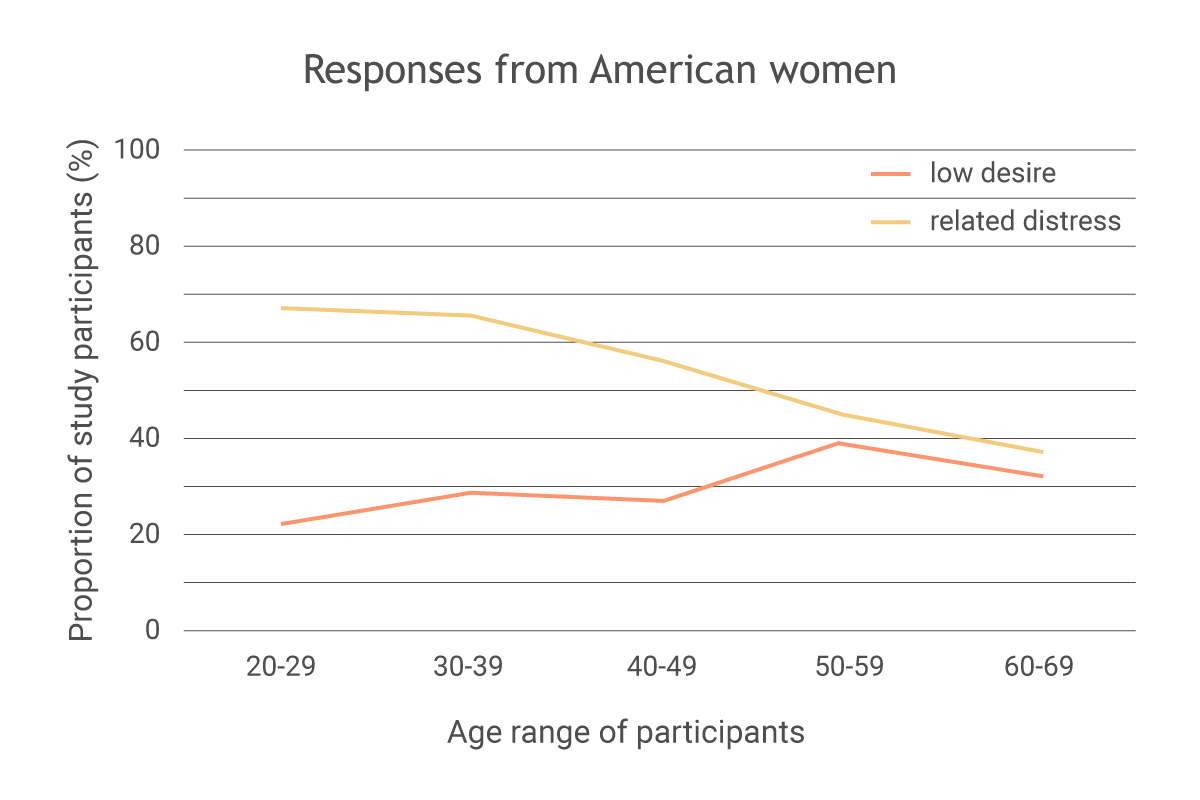Culture and age contribute to women’s experiences of sexual dysfunction and distress
Many studies have shown that as women get older, they are more likely to experience low sexual desire. However, the proportion of women who experience both low sexual desire with associated distress (known as hypoactive sexual desire disorder, or HSDD) doesn’t change with age, according to research. So why might this be?
Richard Hayes and his colleagues at the University of Melbourne aimed to find the answer to this question. The study involved women from the United States, the UK, Germany, France, and Italy completing a survey on sexuality.
About 3500 women provided their input for the study – about half from the USA and half from Europe. Respondents were between 20 and 70 years of age and were in a sexual relationship at the time that they completed the survey, to avoid the effect that not having a partner could have on desire or distress.

What the study found
Low sexual desire
The older the participants were, the more likely they were to report having low sexual desire.
Related distress
Interestingly, the opposite was true of distress around low desire – there were higher levels of distress in younger women despite fewer of them reporting low sexual desire. This may be because of the expectation of younger women to have a higher sex drive or more sexual activity, and so the contrast between expectation and reality led to higher rates of distress. The opposite may be true for older women – they expect to lose sexual desire as they age, especially following menopause, and so are less distressed by it.
Low desire + distress = hypoactive sexual desire disorder (HSDD)
Hypoactive sexual desire disorder or HSDD in women is characterized by having low sexual desire accompanied by a high level of distress related to it. The proportion of women with both low desire and distress in the study was similar across ages for all participants. As these factors are showing opposite trends with age, this explains why HSDD does not significantly change with age.


Charts adapted from Hayes R et al. (2007) Relationship between hypoactive sexual desire disorder and aging. Fertil Steril. 87(1):107-12.
Differences between European and American participants
An interesting outcome of the study was that there were differences between the proportion of American and European women who reported having low sexual desire and related distress at different ages.
The European women in the study reported large differences in low desire as they got older, with participants in their sixties and seventies reporting this experience nearly five times as often as those in their twenties. While there was also an increase in low sexual desire among the American women as they got older, this change was less dramatic than with European participants (see charts above).
There was also a higher proportion of American women in the 30-39 year age group reporting low sexual desire as compared to European women. More Americans in this age group also reported having distress related to low desire than their European counterparts. This combination translated into a greater proportion of American 30- to 49-year-olds with HSDD.
Culture and sexual expectations of women in different countries may have contributed to how the participants responded in this survey.
Future research
While Hayes’ study offers some interesting insights into women’s sexual desire, there is a lot that is still unknown. There may be many factors which contribute to low sexual desire and distress in women, which may reveal variations between women of different countries, such as:
- overall health
- use of hormone therapies
- use of medications
- age, health and sexual function of their partners
- length of their relationships
Hopefully with more research, we can provide a more complete picture so women can have some clarity on these experiences, as well as more options for treatment.
Reference article:
Hayes R et al. (2007) Relationship between hypoactive sexual desire disorder and aging. Fertil Steril. 87(1):107-12.